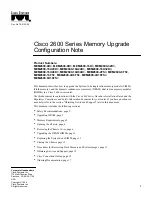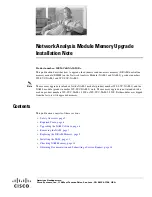
Note:
For
details
on
individuals
tasks,
see
the
related
topics
section.
1.
Quiesce
host
I/O
that
is
updating
the
primary
volumes
that
is
located
in
the
local
site.
2.
Check
the
status
of
Global
Mirror
to
ensure
that
Global
Mirror
is
in
a
good
state
and
that
a
consistency
group
has
formed
successfully
at
the
desired
interval.
3.
Wait
until
two
consistency
groups
form
successfully.
4.
Pause
Global
Mirror
and
suspend
the
Global
Copy
pairs
(A->B).
5.
Create
paths
from
the
B
volumes
to
the
A
volumes.
6.
Perform
recovery
failover
on
the
B
volumes
(B->A).
7.
Perform
the
fast
reverse
restore
process
from
the
C
volumes
to
the
B
volumes,
selecting
the
Initiate
background
copy
option.
Note:
a.
When
you
initiate
the
fast
reverse
restore
process,
Volume
C
becomes
unusable.
b.
There
must
be
no
I/O
allowed
to
the
B
or
C
volumes
during
the
fast
reverse
restore
process.
8.
Wait
for
the
background
copy
to
complete
before
continuing
to
the
next
step.
The
C
to
B
FlashCopy
relationship
ends
when
the
background
copy
completes.
9.
Initiate
the
FlashCopy
from
Volume
B
back
to
Volume
C.
Ensure
that
you
also
select
the
Enable
Change
Recording
and
Inhibit
writes
to
target
volume
options.
This
creates
a
backup
copy
of
the
consistency
group
before
applications
begin
to
update
the
B
volumes.
10.
Start
the
host
I/O
at
the
remote
site
on
the
B
volumes.
You
will
remain
in
production
on
the
remote
site
in
this
configuration
until
you
are
ready
to
return
production
to
the
local
site.
11.
When
you
are
ready
to
return
production
to
the
local
site,
perform
recovery
failback
(B->A)
to
resynchronize
the
A
volumes.
The
application
at
the
remote
site
remains
active.
12.
After
the
resynchronize
process
has
completed
its
first
pass,
quiesce
the
applications
at
your
remote
site
so
that
the
resynchronization
can
complete.
13.
When
the
resynchronization
has
completed
(no
out-of-sync
tracks),
perform
recovery
failover
and
failback
with
Global
Copy
on
Volume
A
to
re-create
the
Volume
A
to
Volume
B
Metro
Mirror
relationship.
14.
Start
the
host
I/O
at
the
local
site
on
the
A
volumes.
15.
Resume
the
Global
Mirror
process.
Using
Global
Mirror
for
an
unplanned
failover
and
failback
Use
this
process
to
manage
an
unplanned
failover
and
failback
that
involves
two
sites
which
are
referred
to
as
the
local
(or
production)
and
remote
(or
recovery)
sites.
Global
Mirror
provides
two-site
extended
distance
remote
copy
disaster
recovery.
When
a
disaster
occurs
at
the
local
site,
you
must
initiate
the
failover
and
failback
recovery
of
consistent
data
on
the
remote
site.
Host
activity
can
resume
on
the
local
site
when
the
host
recovers
but
not
before
a
consistent
set
of
data
is
copied
to
all
primary
volumes
on
the
local
site.
Chapter
10.
Disaster
recovery
using
Copy
Services
149
Содержание TotalStorage DS8000
Страница 1: ...IBM TotalStorage DS8000 User s Guide SC26 7623 03...
Страница 2: ......
Страница 3: ...IBM TotalStorage DS8000 User s Guide SC26 7623 03...
Страница 10: ...viii DS8000 User s Guide...
Страница 12: ...x DS8000 User s Guide...
Страница 14: ...xii DS8000 User s Guide...
Страница 24: ...Department 61C 9032 South Rita Road TUCSON AZ 85775 4401 xxii DS8000 User s Guide...
Страница 26: ...xxiv DS8000 User s Guide...
Страница 50: ...24 DS8000 User s Guide...
Страница 116: ...90 DS8000 User s Guide...
Страница 120: ...94 DS8000 User s Guide...
Страница 152: ...126 DS8000 User s Guide...
Страница 166: ...140 DS8000 User s Guide...
Страница 184: ...158 DS8000 User s Guide...
Страница 186: ...160 DS8000 User s Guide...
Страница 192: ...Taiwan class A compliance statement VS07171L 166 DS8000 User s Guide...
Страница 227: ......
Страница 228: ...Printed in USA SC26 7623 03...
















































